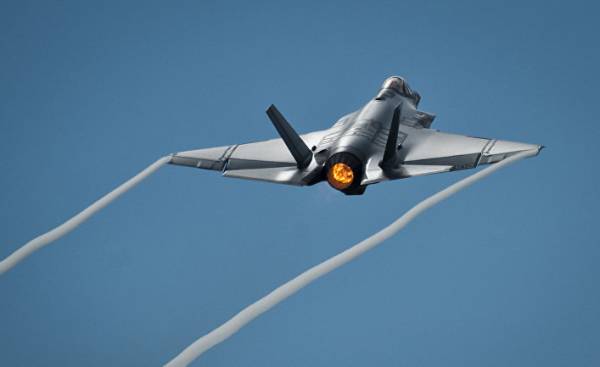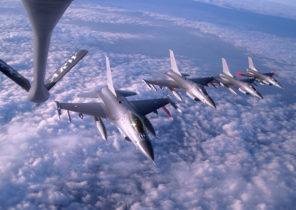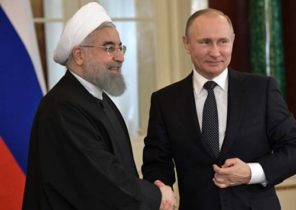
The Russians continue to work on the problem of search and detection of stealth aircraft. However, there are serious doubts that they have found a solution. Serious investment in the forces and means of air defense tell us about what the Kremlin sees the main threat to their land forces United States air force. In this regard, one of the highest priorities for Moscow is to reveal the secrets of the technology “stealth”, and the Kremlin has made this a serious effort.
Russia has experienced a lot of methods and means to defeat stealth technology. Among them is an attempt to develop closely linked and integrated air defense system with multiple radars, trying to see the same aircraft from different directions. But it is not known how effective these attempts. “To see the aircraft or part is good, but the main challenge is to ensure the steady approach of the missile close to the target of the enemy,” said Coffman.
Russian air defence system might seem equally impressive as her ever-improving system of restriction / blocking zone. But disguised defense areas cannot be called impenetrable “iron domes”, although that is how they are characterized by some analysts.
A layered and integrated air defense system makes it extremely costly (in terms of personnel and military equipment) attack with the use of fourth generation aircraft such as the F/A-18E/F Super Hornet and F-16 Fighting Falcon. However, this system has an Achilles heel. Russian air defense will be difficult to cope with the aircraft of the fifth generation stealth like the F-22 Raptor and a single strike fighter F-35.
“Regarding the creation of a reliable defense against enemy aircraft of the fifth generation, it is quite clear how Russia is trying to cope with the problem of stealth, told Mike Coffman (Mike Kofman), at the time of giving an interview to The National Interest who worked as a researcher at the CNA Corporation and specializing in Russian military Affairs. Modern Russian radar, the variety of effective missiles and systems, which provide large amounts of data to improve power of defense will share Western countries ‘ air forces into two distinct categories. In the future when these systems will appear from China, Iran and other regional powers, the air force will be divided into those that are able to penetrate advanced air defense system featuring high technology, and those whose task would be limited to bombing ISIS (banned organization in Russia — approx. TRANS.) and his followers.”
Coffman notes that the defense systems of the Russian production, such as s-300, s-400 and advanced s-500 are intended to detect and track stealth aircraft like the F-22 and F-35. The problem for Moscow is that while the Russian long-range radar detection and capture objectives, working in UHF and VHF range and in the range of ultrahigh frequencies is able to detect and even accompany the planes stealth class fighters, as the defeat of these goals is poor. “Russia has developed a series of radar of microwave range and received some great samples, but will she be able to take advantage of this to form a clear picture and to process incoming data to combat stealth purposes?” — asks a rhetorical question Coffman.
The laws of physics dictate that the stealth bomber class fighter should be optimized to be invisible to radar at higher frequencies, say in the range of C, X and Ku. These frequencies use of radar fire control to ensure tracking of targets with high resolution. Representatives of military industry, air force and Navy agreed that when the frequency and the wavelength crossing a certain threshold and create a resonance effect that usually occurs in the upper part of the S-band, telltale signs of stealth aircraft occur a qualitative change.
Normally, a resonance effect occurs when a part of the plane, say, the tail is eight times smaller than the corresponding wavelength. Indeed, a small stealth aircraft, whose lack of size and weight for use on every surface coatings of radar-absorbing material larger than half a meter, shall be subjected to optimization with the choice of the frequency range. What does it mean? Fighters invisible will be visible on the radars operating in the lower frequency range — centimeter, decimeter, or even lower. Larger aircraft with stealth characteristics, such as the B-2 Spirit or B-21, do not have those parts of the airframe, for which there is a resonance effect. In this regard, they are much more effective when they are used against low frequency radar.
The Russians continue to work on the problem of search and detection of stealth aircraft. However, there are serious doubts that they have found a solution. Serious investment in the forces and means of air defense tell us about what the Kremlin sees the main threat to their land forces United States air force. In this regard, one of the highest priorities for Moscow is to reveal the secrets of the technology “stealth”, and the Kremlin has made this a serious effort.
Russia has experienced a lot of methods and means to defeat stealth technology. Among them is an attempt to develop closely linked and integrated air defense system with multiple radars, trying to see the same aircraft from different directions. But it is not known how effective these attempts. “To see the aircraft or part is good, but the main challenge is to ensure the steady approach of the missile close to the target of the enemy,” said Coffman.
The Russians, like the Chinese, have not yet solved this problem, but now it becomes clear that such characteristics as the stealth will eventually lose their benefits and the costs of its provision are high, as before. Over time, Moscow will find a solution to the problem of stealth as a cyclical struggle between offensive and defensive tools will last indefinitely.
Dave Majumdar is editor of the National Interest, covering military issues.







